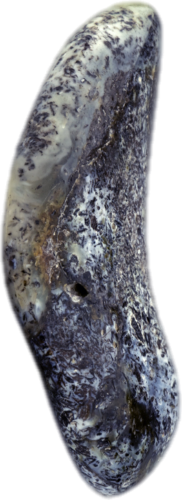





About amber: Blue amber is one of the rarest ambers on our planet. Of the 100 thousands of amber nuggets, only one specimen with a blue colour can be found. The colour of such amber was formed naturally. How did nature create such a unique stone? There are two theories that explain the appearance of blue colour in hardened resin pieces. One group of scientists claims that the stone acquired its blue tint from contact with flowers and their pollen. The blue pigment of withered violets and their petals was mixed with resin that had not yet solidified, thus creating a unique colouring of the stone. Another group of scientists has a different opinion. Their theory is that iron particles in the earth contributed to the formation of amber, and oxidation changed its colour to blue. In ancient times, high priests wore amber of this shade. It was believed that blue amber attracts the blessings of the gods, causes prophecies, and helps to work with the spirits of water, earth, fire and air. Nowadays, blue amber, due to its uniqueness, is the most expensive and sought after by collectors. The opportunity to purchase a piece of blue amber is considered rare and falls on very exceptional occasions.
Amber has formed millions of years ago when forests flourished in the marine regions. Amber was made up of resin from a tree that would fall to the ground, harden, and turn into amber. Amber has been valued since ancient times for its colour, various shapes and natural beauty and does not lose its value even today. Amber comes in a variety of colours. In addition to the usual yellow-orange-brown colour associated with amber, the amber itself can range from whitish to light yellow, and from brown to almost black. Amber is still used in jewellery and has been used as a healing remedy in folk medicine. Amber is divided into five classes that define the chemical constituents of amber.